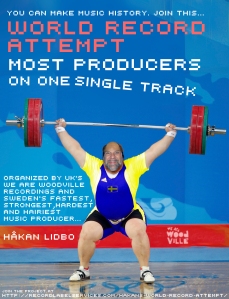I was given a kaossilator a couple of Christmasses ago and got a lot of fun out of it. It’s portability meant you could have sonic fix away from home without having to lug a laptop along. It was also fun to feed its output through Audiomulch patches and Reaktor ensembles and get some horribly mangled beats out of it. The frustrating thing about the Kaossilator was the lack of means to save patterns, so unless you had access to some means of recording audio; your patterns or performances were consigned to the ether.
I’d been aware of the Kaossilator Pro for some time but only took the plunge and bought one after learning that it could save its settings.
So, you open the box and what do you get. Well, apart from the Kaossilator Pro just the power adaptor. No manuals, quick start guide or reference cards. The manual is available in PDF form from the Korg website but if you like sniffing mauals you’re out of luck. The KPro comes in a metallic housing with an array of buttons, pots and a slider. It’s not as portable as the kaossillator in terms of size but also because mains power is the only option available.
On the back are stereo line inputs and outputs, midi in and out, usb and a switch for the gate ARP. On the opposite side are a headphone output and mic input (with volume knobs for both) and a SD card slot.
The Kpro touchpad is about 1.5 times larger than the kaossilator and it also acts as a rudimentary GUI, scrolling program names as you select them and allowing you to adjust the levels of the loop banks.
There are 200 programs in all as opposed to the kaossilator’s 100. So you get all the sounds off the kaossilator plus another 84 which don’t stray too far from the original’s palette. The remaining sixteen programs are effects, delay, granulation, vocoder patches which process the input and the parameters are controlled by the touchpad.
The kaossilator has a button to activate a gate arp and you could select a gate pattern from 45 presets. The kpro has a gate arp button but no presets, the note length and gate speed are controlled by a slider and a time/length switch. I guess this gives you more flexibility in creating patterns but I’m struggling to get to grips with it. So far it seems a little unresponsive, almost like there’s a slight latency between your movements and the audio output.
The main difference between the kaossilator and the Kpro is the ability to save your patterns onto 1 – 4 banks. This means you can build a pattern up in layers and mute and unmute them during a performance. As well as recording your touchpad movements, the KPro will allow you to sample the audio inputs, so anything with an audio output – mp3 player, iPad, stylophone or microphone can be routed through the Kpro and saved in the loop banks. I’ve had fun sampling snippets of TV dialogue and adding them to beats programmed on the Kpro.
My set up means I’ve also been able to play my KPro with my right hand and iPad synths on my left – nerdgasm!
The KPro allows you to save your audio and loops onto an SD card (the max it will recognise is 2GB). You can transfer audio files from the KPro to your laptop and vice versa using the KPro editor software. It is a real no frills piece of software, but it works and makes adding your own loops to the KPro banks really easy. You can create a short loop in FLStudio, export the audio and transfer it directly to one of the Kpro’s banks using a usb connection. Alternatively you could just remove the SD card and plug it directly into your PC.
The KPro will also receive and transmit midi data through it midi and usb connection. You can have it slaved to your DAW or use it as an external controller for a soft synth. This worked straight away with FLStudio and I was able to assign the cutoff and resonance of Sytrus to the touchpad and slider and was able to tweak them as it played a preprogrammed riff (thinking about it you can do the same with any midi controller so it’s not really a USP of the KPro).
The KPro editor allows you to change the cc messages of the Kpro so it’s possible that you could to reassign the touchpad to transmit note on messages to your vst of choice. I must admit I’ve not tried to do that yet but I’ll let you know to see if it’s possible.
All in all, I’m chuffed with the KPro. It’s easy to use, doesn’t throw a fit when you hook it up to a PC and is a lot of fun. It has it’s limitations, the glaring one being that it only does short patterns. However, limitations are good if they help you think of ways in which you can overcome them! 🙂


